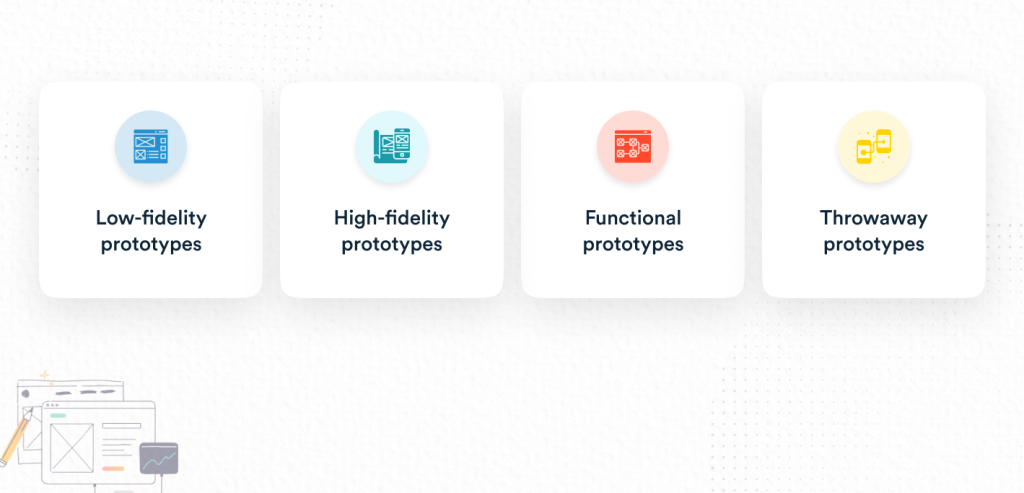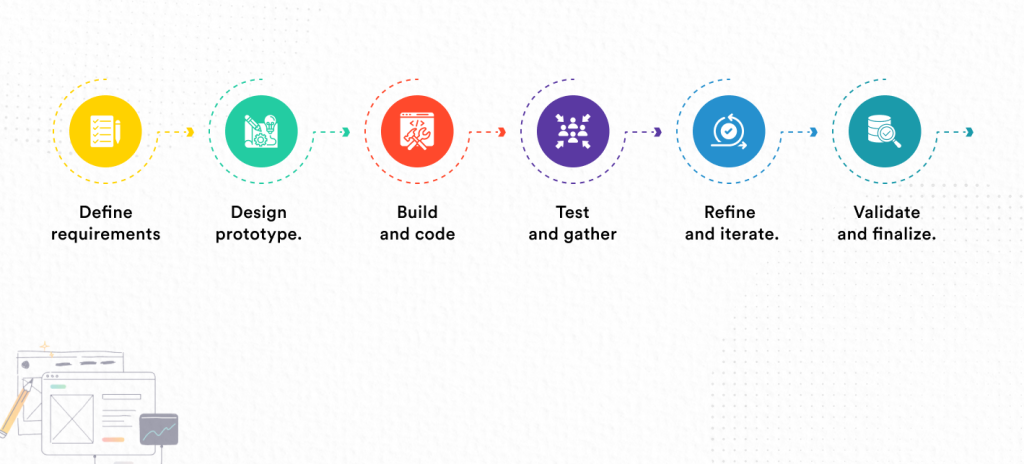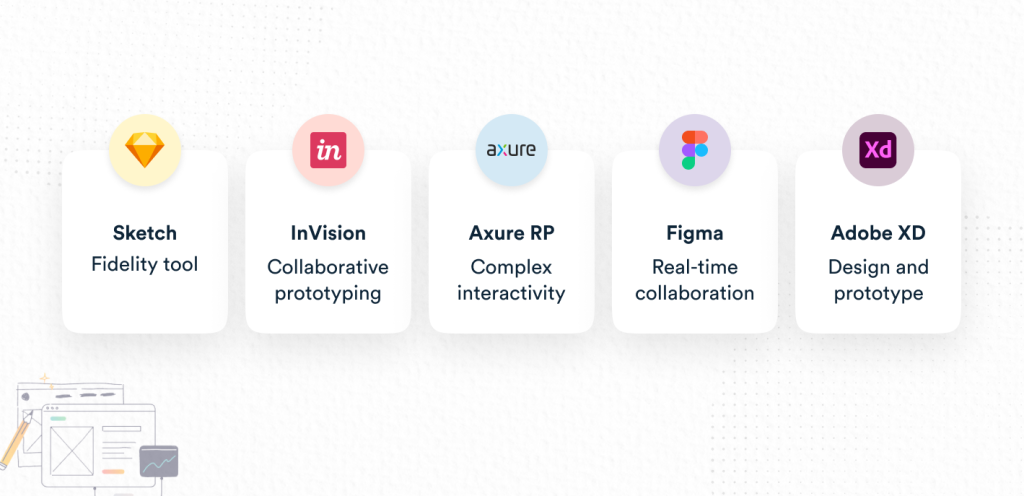In the world of software engineering, prototype models are like testing grounds where ideas come to life. They allow developers to visualize, refine, and validate their designs before the final development phase. Unleashing the power of prototype models can significantly enhance the efficiency and effectiveness of software engineering projects. This comprehensive guide dives deep into the world of prototype models in software engineering, providing valuable insights and practical tips on how to leverage their potential. From understanding the different types of prototypes to utilizing them at various stages of the software development lifecycle, this guide covers all the key aspects.
Discover how prototype models can help you reduce development costs, improve communication among stakeholders, and accelerate the overall development process. Learn from real-life examples and success stories of organizations that have harnessed the power of prototypes to create user-centric and innovative software solutions.
Whether you are an experienced software engineer or a novice developer, this guide is your go-to resource for unlocking the potential of prototype models in software engineering. Get ready to take your software development process to the next level and produce exceptional results.
Advantages Of Using Prototype Models
A prototype model in software engineering is a working representation of a software system that is used to gather feedback and validate design decisions. It serves as a tangible representation of the final product, allowing stakeholders to interact with it and provide valuable insights. Unlike the final product, prototypes are developed rapidly and iteratively, often using low-fidelity or high-fidelity mockups. They help in evaluating the feasibility of a design, identifying potential issues early on, and refining the requirements based on user feedback. By building a prototype, software engineers can reduce the risk of costly mistakes and ensure a better end product.
Using prototype models in software engineering offers numerous advantages. Firstly, prototypes enable early stakeholder involvement, fostering better collaboration and communication. By providing a tangible representation of the system, prototypes facilitate discussions and clarify requirements, ensuring that the final product meets the stakeholders’ expectations. Additionally, prototype models allow for rapid feedback and iteration, enabling developers to quickly refine and improve the design. This iterative approach leads to a better user experience, as user feedback is incorporated throughout the development process. Moreover, prototypes help in reducing development costs by identifying issues early on, preventing rework and unnecessary expenses. By simulating the user interaction, prototypes also aid in usability testing, ensuring that the final software is intuitive and user-friendly.
Types Of Prototype Models

There are different types of prototype models that can be used in software engineering, depending on the project requirements and the stage of development. The most common types include:
- Low-fidelity prototypes: These prototypes are quick and easy to create, often using paper sketches or wireframes. They focus on the basic functionality and structure of the software, allowing for early feedback on the overall design.
- High-fidelity prototypes: These prototypes closely resemble the final product, incorporating detailed visuals and interactive elements. They provide a more realistic representation of the software, allowing for more accurate user testing and evaluation.
- Functional prototypes: These prototypes are built with the intention of demonstrating specific functionalities or features of the software. They are often used to validate complex interactions or technical feasibility.
- Throwaway prototypes: These prototypes are created solely for the purpose of exploring design ideas and gathering feedback. They are not intended to be part of the final product and are discarded once their purpose is fulfilled.
The choice of prototype model depends on the specific goals of the project, the level of detail required, and the resources available. It is important to select the appropriate type of prototype model that aligns with the project’s objectives.
Key Considerations When Using Prototype Models In Software Engineering

The prototyping process in software engineering involves several key steps to ensure a successful outcome. These steps include:
- Identify the requirements: The first step in the prototyping process is to clearly define the requirements and goals of the software. This includes understanding the target audience, defining the functionality, and identifying any specific constraints or limitations.
- Design the prototype: Once the requirements are identified, the next step is to design the prototype. This involves creating the visual and interactive elements of the software, focusing on the key features and functionality.
- Build the prototype: After the design phase, the prototype is built using the selected tools and technologies. This can involve coding, using prototyping tools, or a combination of both.
- Test and gather feedback: Once the prototype is built, it is tested by stakeholders, including users, designers, and developers. Feedback is gathered to identify any issues or areas for improvement.
- Refine and iterate: Based on the feedback received, the prototype is refined and iterated upon. This involves making necessary changes to improve the design, functionality, and user experience.
- Validate and finalize: Once the prototype is refined and meets the desired requirements, it is validated and finalized. This includes documenting the design decisions and preparing for the final development phase.
The prototyping process is an iterative one, with each iteration building upon the previous one. By following a well-defined process, software engineers can ensure that the prototype effectively serves its purpose and leads to a successful end product.
Best Practices For Designing & Implementing Prototype Models
When using prototype models in software engineering, there are several key considerations to keep in mind:
- Clearly define the objectives: It is important to clearly define the objectives and goals of the prototype. This includes identifying the specific functionalities to be tested, the target audience, and the expected outcomes.
- Involve stakeholders early: Involving stakeholders early in the prototyping process is crucial for gathering feedback and ensuring that the final product meets their expectations. Regular communication and collaboration with stakeholders throughout the process is essential.
- Balance fidelity and speed: The level of fidelity of the prototype should be balanced with the speed of development. Low-fidelity prototypes are quick to create and iterate upon, while high-fidelity prototypes provide a more realistic representation of the final software.
- Consider usability and user experience: Prototypes should be designed with usability and user experience in mind. The prototype should be intuitive and easy to navigate, allowing users to interact with the software as they would with the final product.
- Document design decisions: It is important to document the design decisions made during the prototyping process. This includes capturing feedback, rationale for design choices, and any changes made based on user testing and feedback.
By considering these key factors, software engineers can maximize the effectiveness of prototype models and ensure a successful software development process.
Best Practices For Implementing Prototype Models In Software Engineering
Designing and implementing prototype models require careful planning and execution. Here are some best practices to keep in mind:
- Start with a clear vision: Before beginning the prototyping process, it is important to have a clear vision of the desired end product. This includes understanding the user needs, business requirements, and technical constraints.
- Focus on the user: Prototypes should be designed with the user in mind. User-centered design principles should be applied to ensure that the software is intuitive, easy to use, and meets the needs of the target audience.
- Keep it simple: Avoid overcomplicating the prototype with unnecessary features or functionalities. Focus on the core functionalities and design elements that are essential for testing and validation.
- Promote collaboration: Encourage collaboration and communication among stakeholders throughout the prototyping process. This includes involving users, designers, developers, and other relevant stakeholders to gather feedback and insights.
- Iterate and refine: The prototyping process is iterative by nature. It is important to iterate and refine the prototype based on user feedback and testing results. This allows for continuous improvement and ensures that the final product meets the desired requirements.
- Use appropriate tools and technologies: Selecting the right tools and technologies for prototyping is crucial. There are a variety of prototyping tools available that offer different features and capabilities. Choose the tools that best align with the project requirements and the team’s skills.
By following these best practices, software engineers can create effective and impactful prototype models that drive successful software development projects.
Tools & Technologies For Prototyping In Software Engineering

There are various tools and technologies available for prototyping in software engineering. Here are some popular ones:
- Sketch
Sketch is a popular design tool that allows designers to create high-fidelity prototypes with ease. It offers a wide range of features and plugins that enable designers to create interactive and visually appealing prototypes. - InVision
InVision is a prototyping tool that enables designers to create interactive and animated prototypes. It offers collaboration features that allow stakeholders to provide feedback and comments directly on the prototype. - Axure RP
Axure RP is a powerful prototyping tool that allows designers to create complex and interactive prototypes. It offers features such as conditional logic, dynamic content, and advanced interactions. - Figma
Figma is a collaborative design tool that enables designers to create and share prototypes in real time. It offers a range of design and prototyping features, making it a popular choice among design teams. - Adobe XD
Adobe XD is a comprehensive design and prototyping tool that allows designers to create interactive prototypes. It offers features such as voice prototyping, and auto-real-time.
- Sketch
Challenges & Limitations Of Using Prototype Models
- Time and resource constraints: Building prototypes requires time and resources. Developing high-fidelity prototypes can be time-consuming, especially for complex software systems. Limited resources can also impact the scope and quality of the prototype.
- Managing stakeholder expectations: Prototypes can sometimes create unrealistic expectations among stakeholders. It is important to manage their expectations and clearly communicate that prototypes are not the final product but rather a tool for feedback and validation.
- Balancing feedback and design decisions: Gathering feedback from stakeholders is important, but it is equally important to balance their input with design decisions. Not all feedback may align with the project objectives, and it is crucial to make informed design choices based on the overall vision.
- Technical feasibility: Prototypes may not always accurately represent the technical feasibility of a design. Certain features or interactions may be challenging to implement in the final product, even if they are easily demonstrated in the prototype.
By being aware of these challenges and limitations, software engineers can effectively manage them and ensure that prototype models are used to their full potential.
Case Studies Showcasing The Successful Use Of Prototype Models
Numerous organizations have successfully harnessed the power of prototype models to create innovative and user-centric software solutions. Here are some case studies that highlight their success:
- Airbnb: Airbnb used prototyping extensively to refine its user experience and test new features. By rapidly iterating on prototypes, they were able to gather valuable feedback from users and make data-driven design decisions.
- Google: Google used prototyping to develop its Material Design system. By creating interactive prototypes, they were able to test and refine the design principles, resulting in a cohesive and intuitive user interface across their products.
- Slack: Slack utilized prototyping to validate its messaging platform and gather feedback from users. Through iterative prototyping, they were able to refine the user experience, leading to a highly successful communication tool.
These case studies demonstrate the effectiveness of prototype models in driving innovation and creating user-centric software solutions. By leveraging the power of prototypes, organizations can gain a competitive edge and deliver exceptional software products.
Conclusion: Final Thoughts On Harnessing The Potential Of Prototype Models In Software Engineering
In conclusion, harnessing the potential of prototype models in software engineering is a smart and practical approach. It simplifies the complex development process, allowing for iterative improvements and early user feedback. It’s a cost-effective strategy that aligns with your vision and budget.
At Aipxperts, we understand the importance of leveraging these models to deliver high-quality software efficiently. We’re not just a development team; we’re your dedicated partner in crafting successful software solutions that meet your needs. Embracing prototype models with us by your side ensures a smoother journey toward software excellence.
What Are Prototype Models In Software Engineering? | Learn how this iterative approach accelerates custom software development at Aipxperts. Partner with us for innovative solutions and a risk-free 15-day trial.











